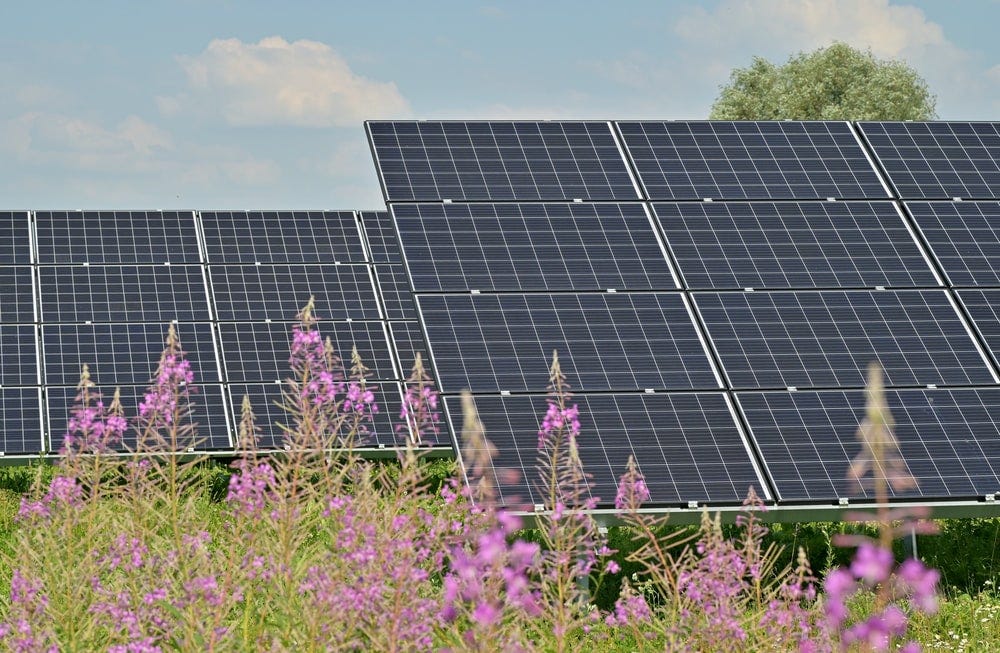Biden wants to expand solar, but he'll have to convince people to allow the panels to be placed
By Gary Abernathy
Opposition to solar panels has sometimes been fierce

The Washington Post reported Wednesday on the Biden administration’s push to convert the country to solar energy.
The Biden administration announced a blueprint Wednesday outlining how solar energy could produce nearly half of the nation’s electricity by mid-century, part of its ambitious bid to address climate change. The new Energy Department analysis shows how the U.S. can scale up production of solar panels, which now provide 3 percent of the nation’s electricity, to 45 percent over the next three decades. The move, which would transform the nation’s energy industry and infrastructure, shows how President Biden is determined to reshape the economy and cut U.S. greenhouse gas emissions in the face of staunch political opposition. While the administration has not set a specific solar energy target, the president has called for 100 percent of the nation’s electricity to come from clean energy by 2035.
What the story did not include (although it might be updated since the version I saw was an early one) was how the proliferation of solar actually happens. It happens by installing more solar panels. That requires land. And the installation of more solar panels on what are currently fields and pastures in places like southern Ohio is causing a tremendous amount of controversy.
Many farmers are making deals with solar companies to install solar panels on what amounts to thousands of acres when all the farms are combined. Neighboring farmers and residents, meanwhile, are upset that what have long been fields of corn and soybeans will soon turn into homes for bright, shiny solar panels. That’s not what they want to see when they walk out of their doors every morning. And, they worry about what it will do to their own property values.
From a story back in May in my former newspaper, the (Hillsboro, Ohio) Times-Gazette:
One concerned citizen called the area “the wild west of solar panels,” and it was a frustrated, exasperated and at times hostile crowd that greeted State Rep. Shane Wilkin (R-Hillsboro) in the Lynchburg fire station Tuesday evening. The standing room only event was called to allow private citizens whose property either bordered on or was adjacent to any of the three proposed solar panel farms in the Lynchburg area to air their grievances about perceived devaluation of property values, loss of productive farm land, wildlife and health concerns, and fears of pollution of ground water. Many were in support of a pair of bills making their way through Senate and House committees in the Ohio Legislature that would give local townships the right to vote yes or no on allowing large-scale utility solar or wind farms to build in their localities.
Emotions ran high at the meeting:
One woman questioned not only property values, but also health and safety issues since her husband was fighting cancer, and she said that there were plans to build a substation literally in her front yard near the driveway. “There’s a reason why there are no substations in the middle of subdivisions,” she said. “My husband has stage-4 cancer, and it’s not just about whether I can sell my house now, because I won’t be able to — I will not get out of my house what it’s now worth.” … Nicole Oberrecht, whose property is within the boundaries of the proposed Yellow Wood Solar Farm in Clinton County, spoke passionately and expressed disappointment that since the project exceeded 50 megawatts, all decisions were made at the state level and not locally... “Our fate is in the hands of the power siting board, and I think that citizens with skin in the game should have the authority to approve or disapprove these projects at a local level and not some panel of individuals in Columbus,” she said.
Since then, the Ohio legislature passed, and Gov. Mike DeWine (R) signed into law, a bill giving local county commissioners more control on whether or where solar and wind developments can be located in any given county. But it’s not retroactive, so the deals already done are moving forward.
It’s a problematic issue that will eventually have to be dealt with when it comes to the drive to expand the country’s reliance on solar energy — which our government is apparently choosing to support with its considerable power and our tax dollars over other traditional energy sources.
West Virginians split over whether 2020 vote was legit

I enjoyed being a guest on Hoppy Kercheval’s “Talkine” show on WVMetroNews on Monday, discussing a new poll showing that West Virginians are evenly divided on whether the 2020 presidential election was legitimate.
That’s not a surprising result from a state where nearly 69 percent of voters supported Donald Trump. But, as Hoppy and I discussed, it’s an unsettling and dangerous attitude when it comes to upcoming elections. After Democrats and Never Trumpers did everything in their power to cast doubt on the 2016 results (Russia! Russia! Russia!) and Trump and many of his supporters are insisting that Joe Biden’s election was a fraud, is the pattern being set for people to always deny the result if their candidate doesn’t win?
Sign up or share this newsletter
Please sign up to receive this newsletter directly into your inbox or, if you are already a subscriber and reading this by email, share with a friend using the convenient button below. Thank you!



JMHO, but I hate the idea of our farm land turning into solar panels. I know I am not in agreement with our climate change people. I love nature & our farm fruits & animals.